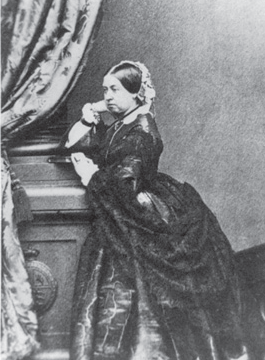Queen Victoria (1819–1901) was the monarch of Great Britain for a record sixty-three years and ruled the British Empire at a time when it was the world’s unquestioned military superpower. The era—dubbed the Victorian Age—was also a period of great scientific and technological advances, political change, and cultural transformation in Britain.

During Victoria’s reign, the British monarchy evolved into a primarily symbolic office that ceased to exert real political power. But it was as a figurehead—she was arguably the most recognizable person in the world, as well as a symbol of British might—that Victoria left her imprint on the world’s imagination.
Victoria was a granddaughter of King George III (1738–1820), and she inherited the throne after the death of her uncle, King William IV (1765–1837), who had no legitimate children of his own. She was eighteen years old when she became queen.
Three years later, Victoria married a German prince, Albert of Saxe-Coburg-Gotha (1819–1861), and gave birth to the first of nine children. Albert’s death from typhoid in 1861 was a profound shock to the queen; she spent the rest of her life in mourning, never remarried, and was nicknamed the Widow of Windsor after she largely withdrew from public life.
For the most part, Victoria’s reign was a time of growing economic prosperity in England, with massive industrial growth and a burgeoning middle class. The labor movement also gained power and clamored for more political power during her rule. Internationally, Victoria was inextricably linked with the British Empire, which reached the height of its power in the late nineteenth century. In 1876, she was named empress of India. In 1897, her Diamond Jubilee—the sixtieth anniversary of her coronation—became a giant celebration of the empire. (Rudyard Kipling’s poem “Recessional,” a celebration of British imperialism, was composed for the occasion.)
Victoria died at age eighty-one and was succeeded by her son, Edward VII (1841–1910).
ADDITIONAL FACTS
- Victoria reigned for the longest time of any monarch in the history of the United Kingdom. The incumbent queen, Elizabeth II (1926–), will need to reign until 2016 to surpass her predecessor’s record.
- Victoria was nicknamed Drina after her baptismal first name, Alexandrina.
- Victoria had nine children, several of whom married members of other European royal families. The current monarchs of Sweden, Norway, Spain, and Denmark are all descendants of Victoria.
